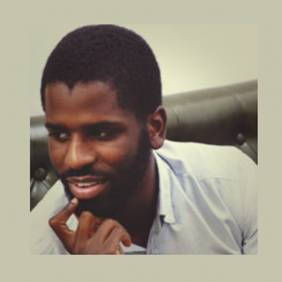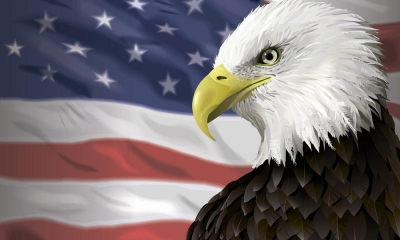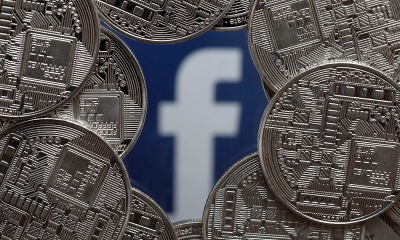For Trump and China, the Devil is in the Detail

In the midst of all of the hype, angst and uncertainty concerning matters of trade between China and the USA, perhaps the best solution to this issue lies in the old, worn path that is history.
In the midst of all of the hype, angst and uncertainty concerning matters of trade between China and the USA, perhaps the best solution to this issue lies in the old, worn path that is history. If President Trump wishes to make America ‘great’ again, it is important for him to understand when and how exactly this greatness was realised, and adapt its blueprint in a way that suits the needs of a 21st century US economy. A change in approach is needed, and signs can be found not only in the USA’s past, but also in the playbook of what is still a booming China in terms of economic growth and development. And rest assured that while increased access to the Chinese market has its place in this new, more dynamic strategy for growth, it may not be the game changer that the Trump administration is hoping for – for that they may have to look closer to home, and bring new meaning to the ‘America First’ motto.
Teaser Tariffs and Politics as Usual
As the US mid-term elections edge closer, pressure mounts on President Trump to keep his blue collar supporters content and prized away from the opposition in the Democratic Party. Many of the voters who helped tip the scales in his favor in the 2016 US elections were based in the Rust Belt, formerly blue states of Michigan, Ohio and Pennsylvania, with much of this constituency opting for Trump on the basis of his anti-trade, tough on China rhetoric. Now, over the course of a year, it seems as if Trump is making good on his campaign pledges as, with each passing month, the president unveils more moves in a startegy which can only be likened to a game of chicken.
Signs of what some would deem as a harsher clampdown on China arguably began with the Trump administration announcing its formal opposition to China being granted market economy status by the World Trade Organization in November. Thereafter, the US government has blocked Chinese merger attempts with domestic companies, imposed tariffs on solar panel imports (a product in which China leads the world, in production and investment terms) and steel and aluminum imports. This is before we’ve even gotten to touching on Trump’s more recent announcements, as additional tariffs represent a step up in intensity as the nation looks to impose a 25 percent tariff on $50 billion worth of Chinese imports – or possibly more. Beijing’s hand has now been forced, and it has responded in kind with $3 billion worth of tariffs, ranging from 15 percent to 25 percent, on American imports such as pork, fruit and steel pipes. An additional tariff of 25 percent on 106 American products worth up to $50 billion was also announced last week.
In light of all of this, President Trump has openly admitted to using the threat of such tariffs as a means of exerting pressure on China, in the hope that some of the restrictions placed on US enterprises doing business in the country as well as China’s vast array of import tariffs will be removed or at least reduced in response. And to some, it would appear as if he has gotten his wish. Earlier this week, during a keynote speech in Hainan Province, President Xi Jinping expressed China’s desire to expand imports, strengthen protection of intellectual property, and further open up its financial and manufacturing sectors to foreign investment. Interestingly, as noted in a previous article of mine, many of these changes have been planned for some time, with some of them being announced at the end of 2017, hence the speech should be seen more as a reiteration than an announcement of shifting policy, less of a direct concession than a rehashing of old news. Nonetheless, it may be just enough to sidestep any chances of a trade war, with President Trump shortly sending out a tweet praising the speech. Perhaps the president or many of his supporters see this as a victory, and some will agree while others don’t. Back to politics as usual.
America First or Americans First?
It could be argued that part of the rationale behind US led protectionist efforts does tie back to President Trump’s mantra, that need to ‘make America great again’. Have no doubt about it, MAGA is more than just a catchy slogan or a vague talking point. Indeed, President Trump has on numerous occasions alluded to a specific period in US history as to when he felt that America was truly great. For instance, in an interview with the New York Times in 2016, when pressed on identifying a period where he felt that the USA was at its best, he went on to point out two periods: America shortly after the end of the Great War, in the closing chapters of the Progressive Era, and the United States throughout the late 1940’s and 1950’s. These periods were marked by rising wages and improved quality of life for much of the nation’s citizenry as union membership increased among the general population and government played a relatively active role in safeguarding the wellbeing of its people. The implementation of anti-trust laws in the early 20th century, then the passage of the G.I. Bill and the development of large scale, publicly funded infrastructure programs such as the Interstate Highway System later after the end of the Second World War illustrate this well and are fondly remembered.
However, the era of today and how the average worker fares in it is very different when compared with the ages which President Trump seems to herald as the time when America was great. Real median household income has remained largely flat since 2000 and the federal minimum wage hasn’t seen any increases since 2009. All the while corporate profits as a share of total GDP in the USA were at 9.5 percent for the second quarter of 2017, essentially 3 percentage points (or almost 50 percent) higher than the long-term average of 6.6 percent, and wages and salaries as a percentage of GDP in 2016 only clocked in at 43 percent, 4 percentage points below the long-term average of 47 percent. Data from the US Labor Department also shows that half of America’s jobs only pay $18 an hour, which amounts to an annual income of $37,000 for someone working fulltime hours. The message is clear, middle out economics is being hollowed out, and the nation’s future growth prospects are being compromised as a result of it. Consumption is responsible for two thirds of the US economy, thus, the greater the squeeze on the incomes of the middle class, the lower the potential of growth.
How Trump’s protectionist efforts towards China will help in addressing these issues is anyone’s guess. Particularly given that unlike earlier periods of America’s history such as the ones President Trump has been known to look back at with nostalgia, the economy has changed and evolved in a way which calls into question whether many of the Trump administration’s tariffs are even fit for purpose. In 1953, total manufacturing in the USA as a percentage of GDP was the US economy’s largest single contributor at nearly 30 percent. But times have changed since then and business services such as finance, insurance and real estate is now the largest single economic sector in respect to its share of GDP, having ousted manufacturing for the number one spot in the 1980’s. Lack of jobs or opportunity for your everyday American is not the issue, stagnant wages found in many jobs in the service and administrative sectors in the midst of rising healthcare and education costs is.
Taking a Page Out of China’s Book
With all that said, history has not always been the best teacher because many of us tend to ignore it, hence it continues to repeat itself. Therefore, if the US refuses to turn to history for help on crafting a solution, then it must find itself in the awkward, rare situation of following the lead of other nations across the world. One country in particular immediately springs to mind, and that is China. In spite of some of the negative press received by China in the US as of late, any successful attempts at pushing for better trade arrangements between the two trading partners won’t be the silver bullet to many of America’s economic woes that some believe it will be. However, this is not to say that the USA can’t learn a thing or two from China concerning economic policy.
As part of the East Asian giant’s ambitions to shift its economy away from low-end, export based manufacturing to one more focused on the manufacturing of medium and high value goods, which also relies more on domestic consumption for growth, China has actually been pushing for wage growth. For instance, China’s national minimum monthly wage has grown almost threefold in the space of a decade, rising from 840RMB in 2008, to 2,420RMB in 2018. The nation’s personal income tax threshold has also risen significantly throughout the years, having more than doubled from its 1,600RMB figure in 2006 to its current level of 3,500RMB, which is also rumored to increase to 5,000RMB in the near future. If the USA were to go back to adopting this approach, then there is a chance that the economy and its population would see vast gains in terms of rising levels of consumption and investment, coupled with higher living standards and consumer confidence, as is becoming the case with China.
As the US Midterm Congressional 2018 Election Nears, Politicians Position Themselves for Victory, But the Key Issues Remain Unanswered
The possibility of losing both the House and the Senate could spell impeachment for the current Commander in Chief, and under these circumstances, doing whatever is necessary to ensure that doesn’t occur must be President Trump’s first priority. Although many will see the contents of President Xi’s recent speech as indicative of a political, as well as economic victory for the Trump administration, the longstanding issues pertaining to rising income inequality and an ailing middle class, which threaten to undermine the economy’s sustainability, will continue to be ignored, because in China, there lies an antidote, just not the one that most are thinking in the thinly veiled beggar-thy-neighbor policy known as protectionism.
Timothy Lobban BA (Cantab)
Previously copy edited for china.org.cn, also ChinaFocus’ columnist
The article reflects the author’s opinion only, and not necessarily the view of China Focus
 Facebook
Facebook
 Twitter
Twitter
 Linkedin
Linkedin
 Google +
Google +







